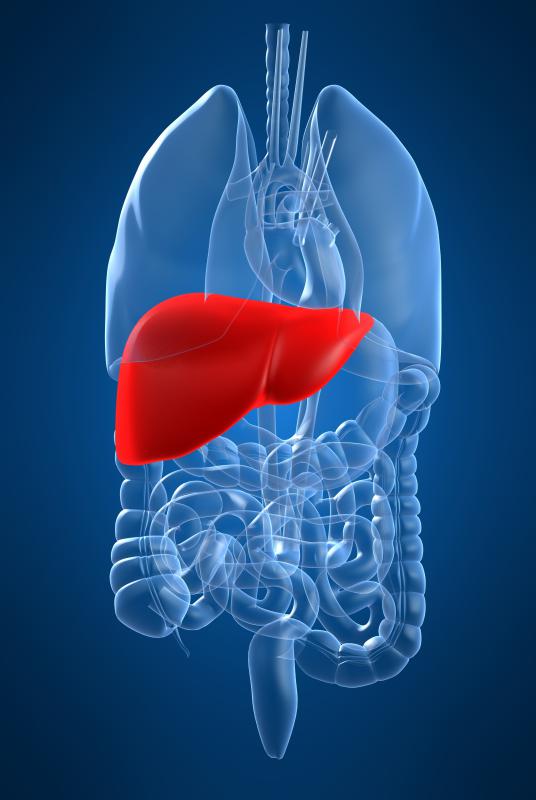At WiseGEEK, we're committed to delivering accurate, trustworthy information. Our expert-authored content is rigorously fact-checked and sourced from credible authorities. Discover how we uphold the highest standards in providing you with reliable knowledge.
What Is Liver Physiology?
The liver is essential to the body’s metabolism. Liver physiology is centered on cells called hepatocytes, which contain thousands of enzymes that drive the human body’s metabolic processes. Processes in the liver break down compounds, store nutrients, and send compounds to be excreted via bile or urine. The liver also filters out damaged blood cells and synthesizes plasma proteins, such as clotting factors and insulin-like growth factor. It is structured into multiple segments and lobules organized around an intricate blood supply.
Human livers are divided into 20 segments that each feature separate branches of blood vessels. Segments are composed of structures called lobules. These include hexagon-shaped areas of liver cells that are arranged around a vein that passes between the cells in sinusoids. Blood passes through the veins in these spaces, into the liver’s central vein, allowing for 1.5 liters (about 0.4 gallons) of blood to flow out of the organ each minute.

Red blood cells (RBCs) are cleared by the liver if they are damaged or at the end of their 120 day life cycle via a process known as phagocytosis. Hundreds of RBCs by the minute are removed, along with bacteria, by Kupffer cells in the sinusoids. Enzymes that are part of liver physiology are also able to break down and remove toxins from the blood supply. Amino acids released by the digestive system pass through the liver and into the blood to build proteins needed for energy.

Protein metabolism is driven by the liver. Also part of liver physiology is the organ’s capacity to store various compounds. Excess glucose is removed from the blood and the liver can store glycogen in quantities up to 8% of its weight. It also stores a 10-month supply of vitamin A, a year’s supply of B12, and three to four months of vitamin D. Most of the vitamin A stored in the body is contained in fat droplets within the liver.

Liver physiology also includes the regulation of blood coagulation. Stores of vitamin K allow for the synthesis of coagulation factors. Fat digestion and absorption are enabled by other liver functions. Bile salts can break up clusters of fat, and water-soluble fatty acids are metabolized as well as deposited as body fat. If not for liver physiology, urea and other by-products do not enter the blood to be filtered, plasmas are not filtered, causing jaundice, and sugars are not passed into the blood, quickly resulting in death.
AS FEATURED ON:
AS FEATURED ON:













Discuss this Article
Post your comments